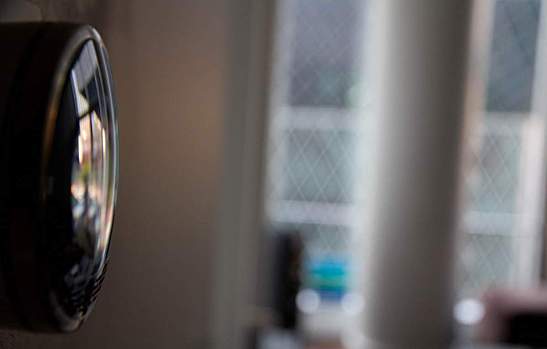The fight for control of the Internet of Things has begun, and the smart home is round one. The bout is Nest versus HomeKit, and the contenders are backed by the two biggest titans of the tech industry: Google and Apple.
Starting With the Nest Thermostat
Nest Labs started off in 2011 with the Nest Learning Thermostat, a smart home Wi-Fi climate system that can be controlled remotely with an app. As the thermostat’s popularity grew, the company released the Nest Protect smoke and carbon monoxide detector.
Google bought Nest Labs for $3.2 billion in January of 2014, according to Engadget, signaling that Google was planning to enter the smart home market. Then, Nest acquired Dropcam this past summer for $555 million, reports Gizmodo. Dropcam produces closed-circuit home security cameras that can be operated remotely through a Wi-Fi connection. Following the acquisition, the companies’ previously separate products, which already existed in many homes, can work together. The thermostat’s sensors can be used to turn on motion sensors on the Dropcam when a user leaves the home, and the Dropcam will start recording if Nest Protect detects a fire or high level of carbon monoxide.
Apple Enters Suddenly
Rather than acquiring companies in the industry, Apple is starting from scratch with HomeKit. While HomeKit was nominally released with iOS 8, no compatible products were initially available. Nonetheless, the Nest versus HomeKit battle has begun.
Hub to Hub
While both systems are controllable by smartphones, each will likely also employ a hub that ties together all aspects of the system when a phone is not present. HomeKit will be using the Apple TV box as a hub, according to TechCrunch. Apple TV is powerful already, with the potential for Siri integration, and Apple began experimenting with including HomeKit code in Apple TV software long before making the planned link public.
HomeKit devices will communicate through low energy Bluetooth, which has been incorporated into most recent Apple products, meaning that iPads, iPods, and MacBooks could function as hubs, in addition to iPhones and Apple TV sets.
On Google’s side, a Nest thermostat can act as the hub. Nest uses a radio protocol called Thread for connectivity, reports Forbes.
Third-Party Compatibility
Each company is working to encourage developers to use their ecosystem. HomeKit is really a platform for third party devices and apps, rather than a stand-alone product, and Apple is dependent on other companies buying in. The developers are listening and following: Forbes reported that Velvetwire, a startup that produces smart chargers, changed to using Bluetooth low energy for its wireless connectivity as soon as Apple announced that HomeKit would be using Bluetooth.
Forbes and others have predicted that Apple’s ecosystem will be a closed one—either devices are in or they’re out. Developers wishing to tie into HomeKit must be licensed through Apple’s made-for-iPhone (MFi) program and adhere to strict standards.
On the other hand, Nest’s system is designed to be open. Google pledged to maintain Nest support for iPhone users, according to Engadget, so the whole system will likely be controllable through any type of mobile device.
Nest is encouraging developers to tie into the Nest system through their Works with Nest program, and many companies are hopping on board, including Mercedes-Benz, Whirlpool, and Lifx.
As this battle is just warming up, there’s no telling who will come out on top. Chances are, however, that in ten years, many Americans will live in a house controlled by Apple’s HomeKit or Google’s Nest.
Which smart home system do you think will be better?
Image courtesy of Flickr
[cf]skyword_tracking_tag[/cf]

